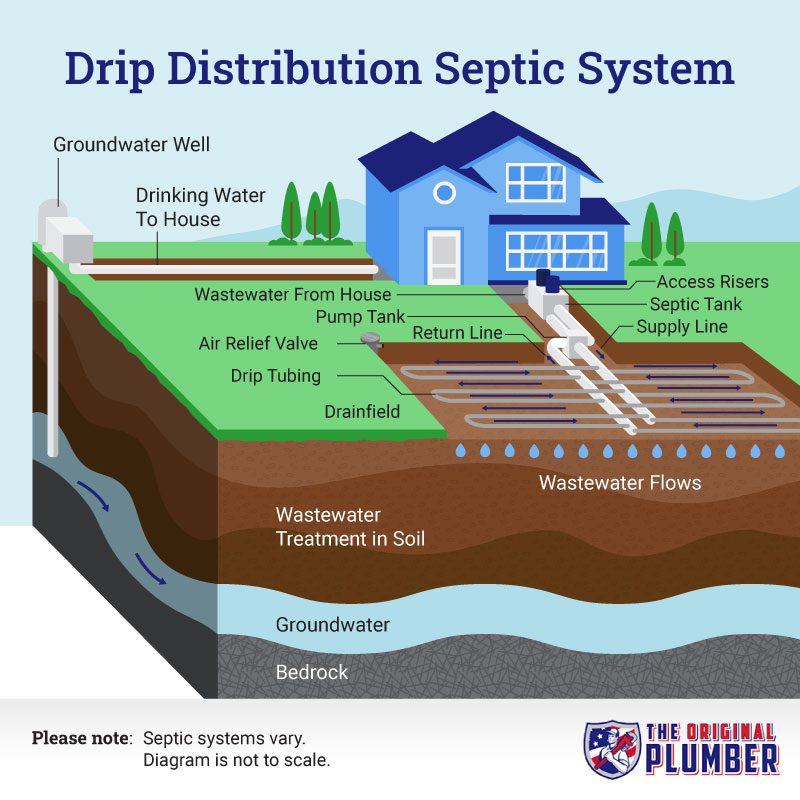Introduction
Owning a home with a septic system entails a profound responsibility to maintain its integrity for optimal functionality. One of the most consequential tasks that homeowners face is the eventual replacement of the septic field, a crucial component that ensures wastewater is safely treated and absorbed into the ground. The prospect of undertaking such a significant home improvement project can raise a myriad of questions, particularly regarding the associated costs. This article aims to provide a comprehensive exploration of the factors that influence the cost of septic field replacement, empowering readers with the knowledge necessary to make informed decisions and effectively plan for this essential home maintenance endeavor.

Image: dynamicmonitors.com
Factors Influencing Septic Field Replacement Costs
The cost of replacing a septic field is subject to a range of variables that can significantly impact the total expenditure. These include:
-
Size of Septic Field: The dimensions and capacity of the septic field directly influence the amount of materials and labor required for its installation. Larger septic fields necessitate more materials, such as drainfield pipes, gravel, and soil, resulting in higher costs.
-
Type of Septic Field: There are various types of septic fields, each with its own cost implications. Conventional septic fields, which are the most common, typically cost less than alternative systems such as sand filters or aeration systems.
-
Soil Conditions: The type of soil on the property significantly affects the cost of septic field replacement. Soils with poor drainage or high clay content require more excavation and additional materials to ensure proper drainage, leading to higher costs.
-
Accessibility: The location and accessibility of the septic field impact the ease of installation and the amount of labor required. Septic fields located in remote or challenging-to-access areas often incur higher labor costs due to the need for specialized equipment or additional crew members.
-
Labor Costs: The cost of labor is a significant factor in septic field replacement. Labor rates vary depending on the region, the expertise of the contractors, and the scope of the project.
-
Permits and Inspections: Septic field replacements typically require permits and inspections from local authorities. These fees can vary depending on the municipality and the complexity of the project.
Average Septic Field Replacement Costs
According to HomeAdvisor, the average cost of septic field replacement in the United States ranges from $3,000 to $12,000. However, it’s important to note that these figures represent a broad spectrum and actual costs can fluctuate widely based on the factors discussed above.
Additional Considerations
In addition to the direct replacement costs, homeowners should also consider the following expenses associated with septic field replacement:
-
Site Preparation: This includes clearing the area, removing old materials, and preparing the ground for the new septic field.
-
Materials: The cost of materials, such as pipes, gravel, and soil, can vary depending on the quality and availability of the materials in the local market.
-
Equipment Rental: If specialized equipment is required for the installation, such as an excavator or backhoe, rental fees may apply.
-
Landscaping: Once the septic field is installed, it’s recommended to restore the original landscaping or create a new design that accommodates the new system.

Image: theoriginalplumber.com
Expert Insights and Actionable Tips
To gain a deeper understanding of the septic field replacement process and costs, consider consulting with reputable professionals in the field. Licensed septic contractors and environmental engineers possess extensive knowledge and can provide valuable guidance throughout the project.
Homeowners can proactively manage the costs associated with septic field replacement by performing regular maintenance on their septic system. This includes pumping the septic tank every 3-5 years and inspecting the system annually for potential issues. Early detection and timely repairs can help prevent costly emergencies and prolong the life of the septic field.
How Much To Replace Septic Field
Conclusion
Replacing a septic field is a significant investment that requires careful planning and budgeting. By understanding the factors that influence the cost of septic field replacement, homeowners can make informed decisions and allocate funds accordingly. Armed with knowledge and practical tips, homeowners can ensure the longevity of their septic system, safeguarding their property’s value and contributing to the overall well-being of their community. Remember, maintaining a properly functioning septic system is not only essential for the comfort and convenience of your household but also crucial for protecting the environment and safeguarding the health of your family.